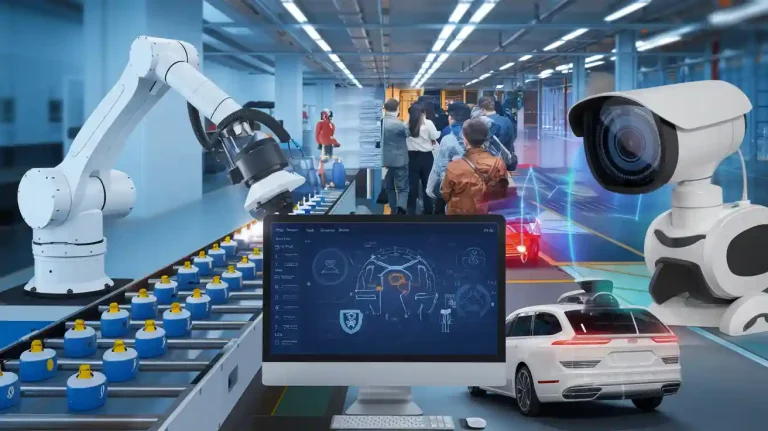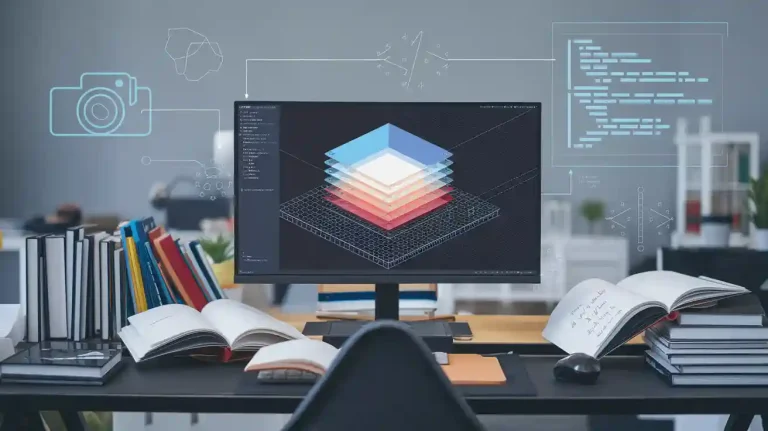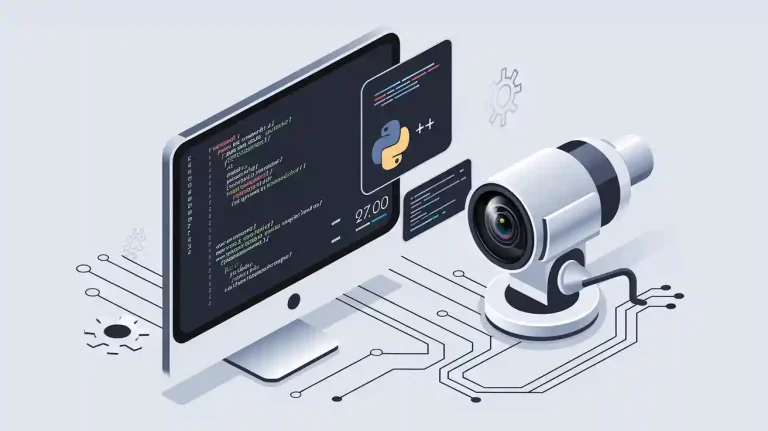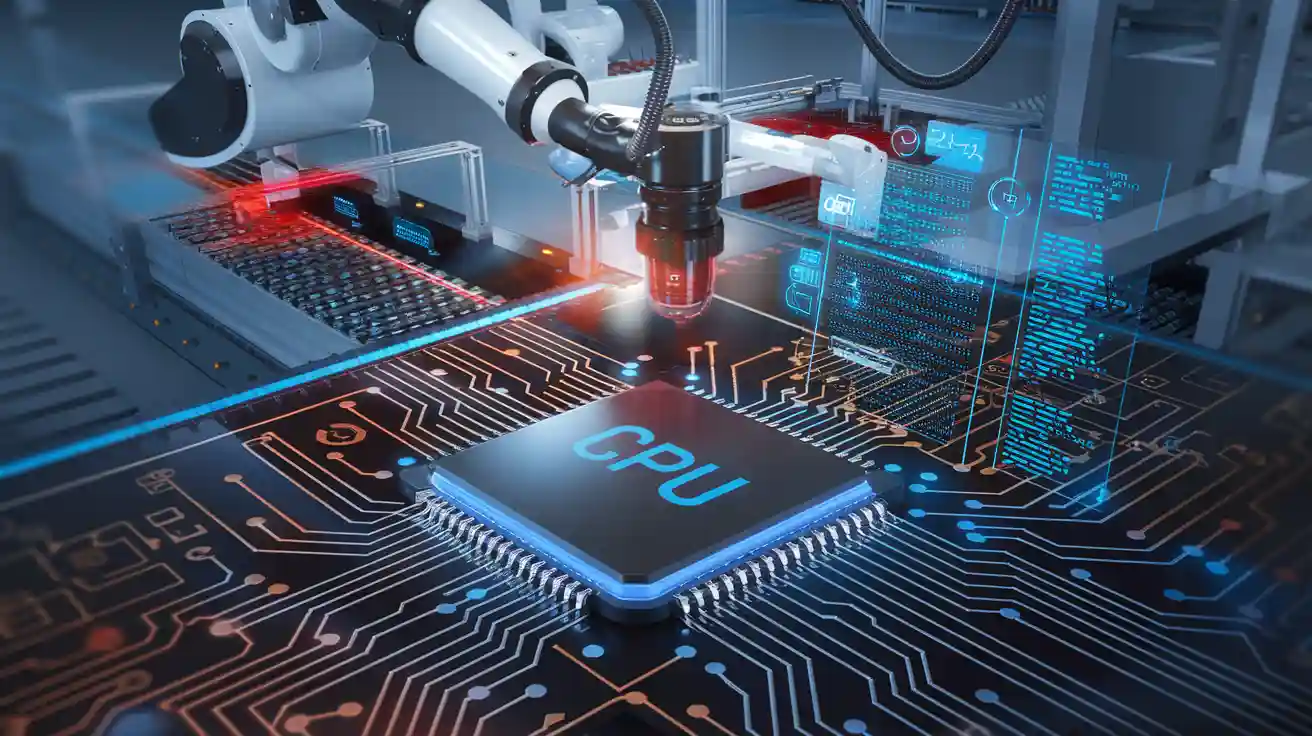
CPUs (Central Processing Units) machine vision system acts as the brain of industrial machine vision. These processors control image data, make decisions, and manage system coordination. Machine vision relies on CPUs to handle real-time analysis, run complex algorithms, and support multi-stage inspections. Powerful CPUs help manage multiple cameras and advanced lighting, which boosts optimization. They work with GPUs and VPUs to ensure speed, accuracy, and scalability in machine vision applications.
Key Takeaways
- CPUs act as the brain of machine vision systems by controlling image capture, processing data, and making real-time decisions.
- Machine vision systems combine CPUs with GPUs and VPUs to balance speed, accuracy, and power efficiency for complex tasks.
- CPUs handle key image processing tasks like edge detection and system control while offloading heavy computations to specialized processors.
- Hybrid systems using CPUs, GPUs, and VPUs improve flexibility and performance, adapting well to different industrial needs.
- Optimizing CPU performance and using advanced techniques help overcome challenges like large data loads and complex defect detection.
Machine Vision Systems Overview
Key Components
Machine vision systems use a combination of hardware and software to automate visual tasks in industrial settings. These systems help factories perform automated visual inspection, quality control, and component inspection. Each part of the system plays a unique role in the computer vision pipeline. The main components found in machine vision systems include:
- Lighting: Different lighting methods, such as front lighting, back lighting, and structured lighting, help cameras capture clear images. Lighting can use various spectra, including RGB, UV, NIR, and SWIR, to highlight features for defect detection.
- Lens: The lens focuses and magnifies the scene, making sure the image is sharp and clear for computer vision applications.
- Camera: Cameras capture images of objects or areas. High-resolution cameras are important for tasks like automated assembly and quality control.
- Cabling: Cables connect cameras to other parts of the system, sending data and power where needed.
- Interface Peripherals: These devices help cameras and computers communicate, supporting fast data transfer.
- Computing Platforms: These include industrial PCs, embedded systems, and cloud-based servers. They process image data and run computer vision algorithms.
- Software: Imaging software controls cameras, processes images, and makes decisions. It includes camera viewers, comprehensive software, and software development kits.
Note: Each component must work together to ensure machine vision systems deliver reliable results for computer vision applications.
Typical Workflow
Machine vision systems follow a step-by-step process to analyze images and make decisions. This workflow supports automated visual inspection and quality control in many industries. The standard workflow includes:
- Image Acquisition: Cameras, lenses, and lighting capture images of the target object. The system uses the right light source and lens to highlight important features for defect detection.
- Data Delivery: The captured images travel through cables and interface peripherals to the computing platform. Fast and reliable data transfer is key for real-time computer vision.
- Information Extraction: Software processes the images, looking for features like size, shape, and color. The system compares these features to preset standards to spot defects or confirm product quality.
- Decision Making: The system uses the extracted information to make automated decisions. It may sort products, reject faulty items, or trigger alarms, supporting quality control and computer vision applications.
Machine vision systems rely on strong CPU performance during data transfer, image processing, and decision-making stages. CPUs handle real-time analysis and system control, making them essential for computer vision and machine vision tasks.
CPUs (Central Processing Units) Machine Vision System
CPU Architecture in Machine Vision
CPUs (central processing units) machine vision system forms the backbone of modern machine vision systems. Each CPU contains three main parts: the arithmetic logic unit (ALU), the control unit (CU), and the memory unit. The ALU performs calculations and logical operations needed for computer vision and image analysis. The CU directs the flow of data, telling the system when to start or stop tasks. The memory unit stores instructions, images, and temporary data during processing.
In machine vision, the CPU architecture supports fast switching between tasks. The ALU handles mathematical operations for pattern recognition techniques and image processing algorithms. The CU manages the sequence of steps in the machine vision workflow, such as image capture, analysis, and inference. The memory unit holds both raw image data and processed results, allowing the system to compare new images with stored templates.
Note: The design of CPUs (central processing units) machine vision system allows for flexible and reliable operation in industrial environments.
Control and Decision-Making
CPUs (central processing units) machine vision system takes charge of control logic and decision-making in machine vision systems. These processors schedule tasks, manage system resources, and coordinate with other processors like GPUs and VPUs. The CPU decides when to start image capture, how to preprocess data, and when to send tasks to other processors for further analysis or inference.
The decision-making process in machine vision systems involves several steps:
- Feature selection using criteria such as information gain or Gini index.
- Tree generation by splitting data based on selected features.
- Tree pruning to remove unnecessary branches and improve accuracy.
- Hierarchical decision-making that combines decision trees with other classifiers.
- Running ensemble methods like random forests and boosting.
- Evaluating performance metrics such as accuracy, precision, recall, F1 score, latency, throughput, memory use, and energy efficiency.
- Optimizing system performance through memory layout tuning and parameter profiling.
- Supporting automation in quality control, diagnostics, object detection, and navigation.
- Providing transparent and interpretable decision-making for users.
CPUs (central processing units) machine vision system also coordinates with GPUs for parallel tasks. The CPU handles preprocessing, such as resizing and normalizing images, while the GPU performs deep learning inference. This hybrid approach allows both processors to work together, improving efficiency and reducing bottlenecks. CPUs balance workloads using batch processing and pipelining, which helps machine vision systems achieve real-time performance.
Image Processing Tasks
Machine vision systems rely on CPUs (central processing units) machine vision system for many image processing tasks. CPUs often execute edge and corner detection algorithms, which are essential for measuring object size and finding defects. For example, a dimensioning system may use the CPU to check if corners and edges are complete. By focusing only on regions of interest, the system can process images faster and remain CPU-based. This approach is important when the system needs to display user interfaces or error messages.
CPUs manage system resources during complex image processing operations by scheduling tasks and managing memory transfers. They offload intensive computations to GPUs using frameworks like OpenCL. This strategy increases throughput and power efficiency. However, current architectures face overhead because data must move between CPU and GPU memory. Future designs aim to unify memory models, making resource sharing more efficient.
| Aspect | CPU-only Processing | CPU + GPU Processing |
|---|---|---|
| Frame Rate | 14.8 fps | 18.3 fps |
| Processing Time | 62 seconds | 48 seconds (22% reduction) |
| Operations per Watt | 75 | 353 (4.7x improvement) |
| Memory Bandwidth (Local Kernel Access) | 22 GBps theoretical | Same |
| Memory Bandwidth (Host Memory Buffer Access) | N/A | ~8 MBps (3:1 bandwidth gap) |
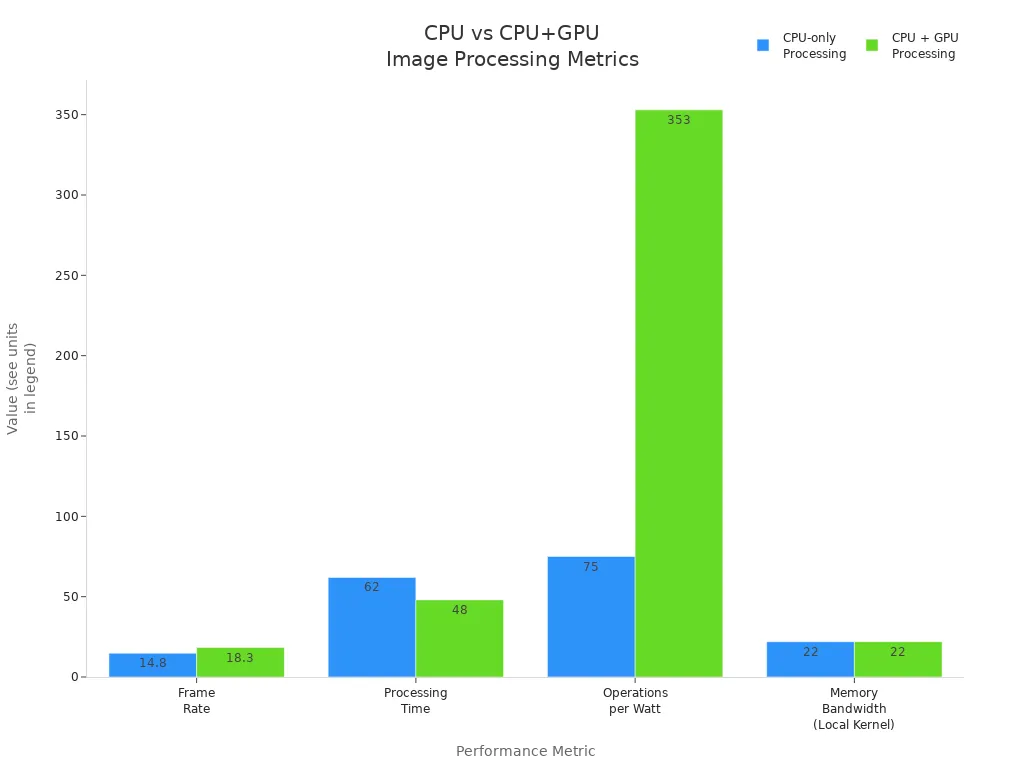
Specialized processors, such as image signal processors (ISPs) and digital signal processors (DSPs), help CPUs handle high data throughput. These processors use parallel or multicore designs to support continuous image streams and tasks like focus tracking. By delegating some image processing tasks, CPUs (central processing units) machine vision system can focus on control, analysis, and inference, ensuring smooth operation in computer vision and machine vision systems.
CPUs vs. Other Processors in Machine Vision
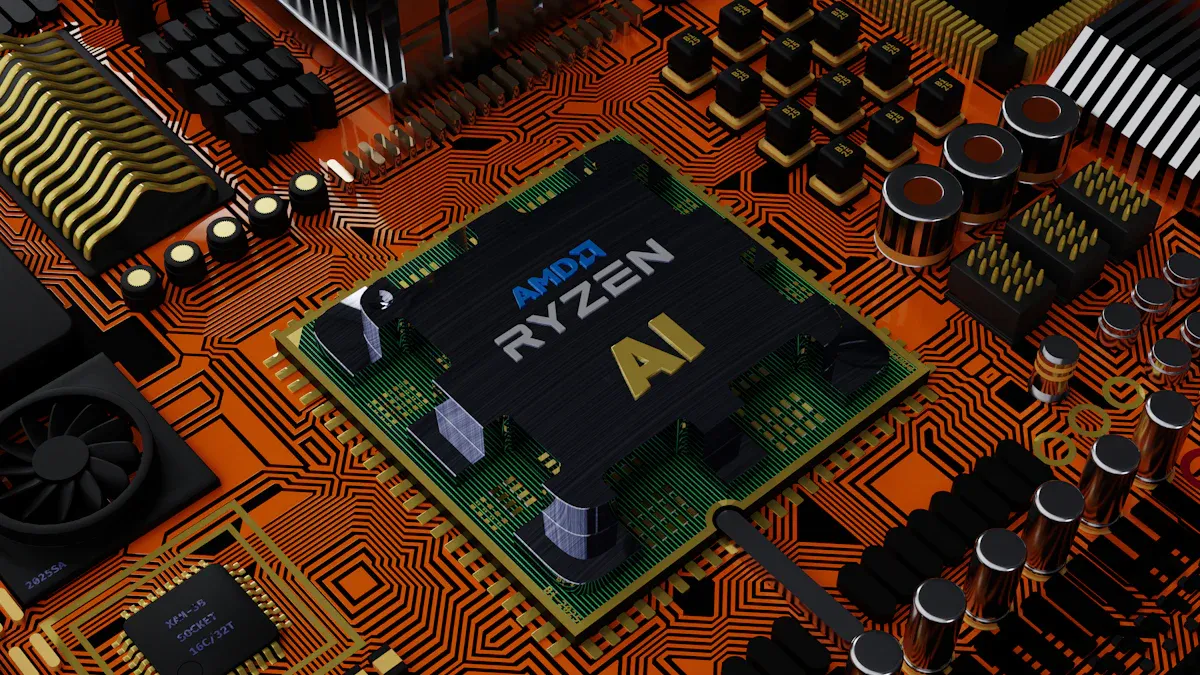
CPUs and GPUs
Machine vision systems use both CPUs and GPUs to process images and make decisions. CPUs have a few powerful cores. These cores handle many different tasks and switch between them quickly. GPUs, or graphics processing units, have thousands of smaller cores. These cores work together to process many tasks at once. The table below shows the main differences:
| Aspect | CPU Characteristics | GPU Characteristics |
|---|---|---|
| Core Structure | Few powerful, general-purpose cores optimized for sequential processing and rapid context switching | Thousands of smaller, specialized cores optimized for massively parallel processing |
| Processing Focus | Low-latency, sequential tasks with high flexibility and control | High-throughput, parallel tasks with less flexibility but greater efficiency |
| Memory System | Extensive multi-level cache (L1, L2, L3) to minimize latency | Fewer cache layers, designed to tolerate higher memory latency by dedicating more transistors to computation |
| Typical Use Cases | Data preprocessing, feature engineering, low-latency inference | Deep learning training, large-scale inference, tasks requiring massive parallelism |
| Flexibility & Control | High flexibility and control for diverse, complex, and latency-sensitive tasks | Less flexible, optimized for parallel computation throughput |
CPUs excel at tasks like data cleaning and feature engineering in machine vision. They also work well for real-time inference. GPUs shine when machine vision systems need to process many images at once, such as during deep learning training.
VPUs and FPGAs
A vision processing unit helps machine vision systems run efficiently. The vision processing unit uses special hardware to speed up tasks like object detection and image classification. It consumes less power than a GPU. This makes the vision processing unit a good choice for mobile or battery-powered machine vision devices. FPGAs, or field-programmable gate arrays, offer another option. They allow machine vision systems to run custom logic for unique tasks. FPGAs work well in harsh environments where heat and power use must stay low. Both the vision processing unit and FPGA help machine vision systems save energy and reduce heat.
Machine vision systems often choose CPUs over GPUs when power and cooling are important. CPUs cost less and work better in small or sealed spaces. The vision processing unit also fits well in these cases.
Hybrid Approaches
Many machine vision systems use a mix of CPUs, GPUs, and the vision processing unit. This hybrid approach lets each processor do what it does best. For example, the CPU can control the system and handle simple tasks. The GPU can process large batches of images. The vision processing unit can run deep learning models without using much power. Some systems also use FPGAs for custom tasks.
Hybrid machine vision systems adapt quickly to new jobs and changing environments. They balance speed, accuracy, and cost. This makes machine vision systems more reliable and flexible for industry needs. Hybrid models, like those combining CNNs and transformers, help machine vision systems detect objects and defects in real time.
Tip: Choosing the right mix of CPUs, GPUs, vision processing units, and FPGAs helps machine vision systems meet different industrial goals.
Embedded Vision Applications and Deep Learning
Embedded Vision Use Cases
Embedded vision applications have become essential in many industries. These systems use CPUs to process images, make decisions, and control devices. In most cases, CPUs work together with GPUs on a unified platform. The GPU handles tasks that need high computational power, such as complex computer vision applications. The CPU manages other processing needs, including system control and data management. This teamwork allows machine vision systems to run smoothly and efficiently.
The table below shows how different industries use CPUs in embedded vision applications:
| Industry / Application Area | Common Use Cases in Embedded Vision Systems | Role of CPUs in These Use Cases |
|---|---|---|
| Surveillance and Security | IP cameras, access control, alarm systems | General-purpose processing for image capture, analysis, and decision-making |
| Industrial Automation | Quality control, inspection, robotics | Processing visual data for inspection and control tasks |
| Healthcare | Medical imaging, patient monitoring, diagnostics | Handling image processing and analysis for diagnostics |
| Automotive | ADAS, autonomous vehicles, in-car entertainment | Real-time vision processing for driver assistance and autonomy |
| Consumer Electronics | Smartphones, smart home devices, wearables | Vision processing for user interaction and device functionality |
CPUs in embedded vision technology support tasks such as image capture, object detection, and real-time decision-making. These processors help machine vision systems deliver reliable results in computer vision applications.
Deep Learning Integration
Deep learning has changed the way machine vision works. CPUs now support deep learning workloads by running optimized algorithms and flexible inference engines. These engines execute deep learning models, such as convolutional neural networks, for real-time image analysis and object classification. CPUs enable low-latency, real-time processing, which is critical for industrial machine vision.
Many machine vision systems use CPUs with GPUs, VPUs, or other accelerators. This combination balances performance, power, and cost. CPUs also help with scalability and integration in edge AI and IoT devices. They allow local processing, which reduces latency and improves data security in ai-powered machine vision.
CPUs support ai inference by running deep learning algorithms that learn from data. This approach increases accuracy and adaptability compared to rule-based systems. Deep learning inference on CPUs leads to higher defect detection rates and faster processing times. CPUs also offer flexible hardware and software configurations, making it easy to handle changing environments and tasks in computer vision applications.
However, CPUs have some limits when running deep learning models. They process data sequentially and have fewer cores than GPUs. This makes them slower and less efficient for large-scale deep learning tasks. Even so, CPUs remain important for real-time ai inference and control in machine vision.
Tip: Combining CPUs with GPUs or VPUs helps machine vision systems achieve high throughput and low latency for deep learning tasks.
Performance and Challenges
Industry Examples
Many industry leaders use CPUs in machine vision systems to improve production efficiency and quality control.
- Averroes.ai deploys AI-powered defect detection on CPUs for real-time monitoring and precision measurement. Their systems adapt quickly and work across different industries.
- Cognex combines embedded AI, 3D inspection, and laser hardware. CPUs handle precise measurements and automate inspection tasks.
- Omron offers smart cameras and controllers that rely on CPU processing for advanced inspection tools and scalable machine vision solutions.
- Robovision uses deep learning algorithms and easy-to-use software running on CPUs. This setup allows teams to develop and maintain vision applications without outside help.
- Pleora Technologies provides real-time connectivity for low-latency video and data transport. Their solutions depend on CPU-based processing for industrial automation.
- IVISYS delivers machine vision systems that boost ROI and uptime in logistics by using CPUs to enhance defect detection and productivity.
These examples show that robust hardware, AI-driven software, and seamless integration all depend on CPUs for reliable image analysis and real-time monitoring.
Performance Factors
Several factors affect CPU performance in machine vision systems. Memory bandwidth plays a key role in how fast CPUs can transfer image data between memory and processing cores. When memory bandwidth is too low, CPUs cannot keep up with the data flow. This bottleneck slows down defect detection and reduces system efficiency. CPUs focus on low latency, but their memory bandwidth is slower than that of GPUs. This difference limits CPU performance in resource-heavy image analysis tasks. Machine vision systems must balance memory speed, processing power, and system design for optimal results.
Overcoming Limitations
CPUs in machine vision face challenges with complex inspections and unpredictable defects. Traditional rule-based algorithms work well for consistent parts but struggle as defect libraries grow. Variability in part appearance, image quality, and surface texture adds to the difficulty. Environmental changes, such as lighting or color shifts, make defect detection harder. Distinguishing between functional and cosmetic anomalies also challenges traditional systems.
To overcome these issues, machine vision systems use advanced strategies:
- The GigE Vision 3.0 standard with RDMA reduces CPU overhead by allowing direct memory access for high-speed cameras.
- External frame grabbers offload image data transfer, freeing CPU resources for analysis and real-time monitoring.
- Model optimization techniques like quantization, pruning, and clustering lower computational demands. These methods speed up defect detection and improve data-driven optimization.
- Converting cameras to native PCIe via Thunderbolt 3 links reduces CPU consumption and system costs.
These solutions help machine vision systems achieve better quality control and faster, more reliable image processing.
CPUs play a vital role in machine vision by managing instructions, system operations, and real-time decision-making. Their multi-core designs allow flexible workload distribution and support both simple and complex tasks.
System designers often choose CPUs for less demanding applications, while combining CPUs with GPUs or VPUs benefits high-throughput or AI-driven tasks.
When selecting CPUs, teams should match processing power to application needs, consider integration with other hardware, and follow best practices for reliable results.
FAQ
What does a CPU do in a machine vision system?
A CPU controls the system, processes images, and makes decisions. It manages tasks like image capture, data transfer, and running algorithms. The CPU also coordinates with other processors for faster and more accurate results.
Why do machine vision systems use both CPUs and GPUs?
CPUs handle control and flexible tasks. GPUs process many images at once. Using both lets the system work faster and handle complex jobs. This teamwork improves speed and accuracy in machine vision.
Can a CPU run deep learning models for machine vision?
A CPU can run deep learning models, but it works slower than a GPU. For small or simple tasks, a CPU is enough. For large or complex models, the system uses GPUs or VPUs for better performance.
How does a CPU help with real-time quality control?
The CPU processes images quickly and makes fast decisions. It checks for defects and sorts products on the production line. This helps factories keep quality high and reduce waste.
What challenges do CPUs face in machine vision?
CPUs may struggle with very large images or complex tasks. They have fewer cores than GPUs, so they process data more slowly. Using extra processors or optimizing software helps solve these problems.
See Also
Understanding How Machine Vision Systems Process Images
A Comprehensive Overview Of Electronics In Machine Vision
Comparing Firmware-Based Machine Vision To Traditional Methods
Exploring The Role Of Cameras Within Machine Vision
Essential Insights Into Semiconductor-Based Machine Vision Systems







